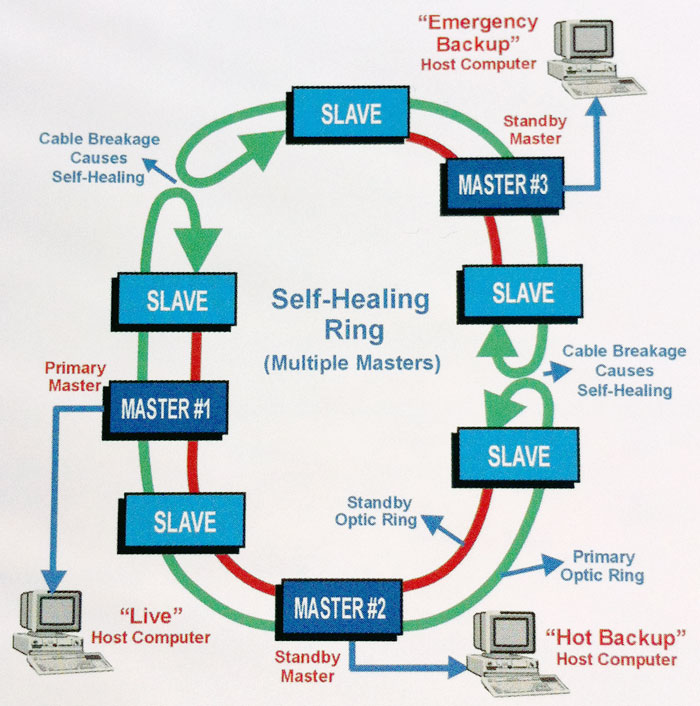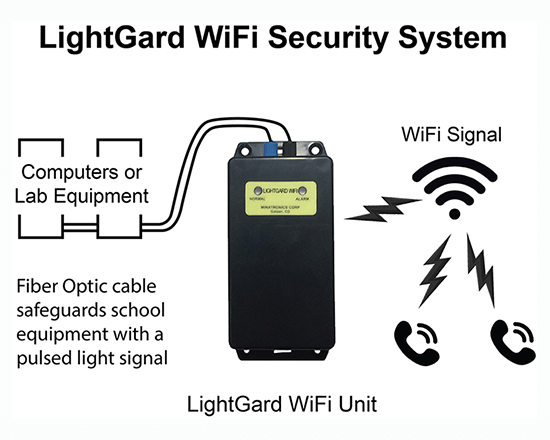Key Features of Fiber Optics Infrastructure for Security Installations You Need to Know
Key Features of Fiber Optics Infrastructure for Security Installations You Need to Know
Blog Article
Enhance Your Security With Advanced Fiber Optic Security Solutions
In an age where safety is paramount, innovative fiber optic security systems present a compelling service for improving security across different atmospheres. What ramifications do these improvements hold for future safety procedures?
Advantages of Fiber Optic Safety
Taking advantage of the benefits of fiber optic innovation considerably improves safety and security systems across various applications. Among the key advantages is the enhanced bandwidth capacity, permitting the transmission of huge quantities of data at high speeds. This is particularly crucial for real-time video clip monitoring, where high-resolution feeds can be sent without latency, guaranteeing immediate feedback abilities.
Furthermore, fiber optics show remarkable resistance to electromagnetic interference, which is essential in atmospheres with potential signal disturbances. This dependability guarantees regular efficiency in crucial security procedures. Fiber optic cables are much less prone to touching and unapproved gain access to contrasted to standard copper wiring, consequently enhancing data honesty and privacy.
An additional noteworthy advantage is the resilience of fiber optic systems; they are extra resistant to environmental variables such as dampness, temperature level fluctuations, and destructive substances. This durability equates to lower maintenance expenses and longer life-spans for safety and security installments.
Last but not least, the lightweight nature of fiber optic cords promotes simpler setup and transmitting, particularly in complex facilities (fiber optic security system). Inevitably, the integration of fiber optic technology into safety systems not only bolsters defense procedures yet also optimizes operational effectiveness
Trick Attributes to Consider
When evaluating fiber optic safety and security systems, a number of crucial attributes have to be considered to ensure optimal performance and effectiveness. First, evaluate the system's detection range and sensitivity; a substantial variety enables for keeping an eye on big areas, while high sensitivity guarantees that even minor disturbances are spotted quickly.
Following, think about the integration capabilities of the system. A fiber optic protection system must effortlessly interface with existing security actions such as cams and alarms, developing a natural safety and security network.
Resilience and ecological resistance are likewise crucial attributes. Make sure that the system is developed to withstand extreme weather and prospective physical threats, as this will certainly prolong its functional lifespan.

Last but not least, consider the scalability of the system. A robust fiber optic protection system ought to be easily expanding to accommodate future demands without considerable overhauls. By meticulously thinking about these features, you can pick a fiber optic safety and security solution that improves safety and protection in your atmosphere.
Installment Process Review
To effectively apply a fiber optic safety system, a systematic setup process is necessary. This process starts with a comprehensive site analysis to identify the details safety and security demands and to identify optimal locations for fiber optic cables and protection gadgets. Following this assessment, the setup team will create a detailed plan, consisting of cable pathways, needed tools, and compliance with regional laws.
Next, the installation includes laying the fiber optic cords, guaranteeing they are protected from environmental aspects and physical damages. Correct handling techniques are important, as fiber optic wires are delicate and moved here can be easily damaged. After the cabling is set up, ports and discontinuations are diligently finished to make certain signal integrity.
The subsequent stage contains setting up security tools such as electronic cameras, activity detectors, and alarm, all integrated with the fiber optic network. Strenuous screening is carried out to verify that all parts are working correctly and to ensure optimum performance.

Contrasting Fiber Optic to Typical Equipments
The advancement of safety innovation has resulted in significant advancements in the contrast in between fiber optic systems and conventional copper-based systems. Fiber optic systems utilize light to transmit information, using exceptional bandwidth and rate contrasted to their copper counterparts. This results in boosted data transmission capabilities, making optical fiber suitable for high-resolution video surveillance and real-time surveillance.
In addition, fiber optic cable televisions are resistant to electro-magnetic interference, minimizing the possibility of signal destruction triggered by external variables. This particular ensures regular performance, also in difficult environments. In comparison, conventional copper systems are extra prone to interference, causing potential vulnerabilities in safety applications.
Sturdiness is an additional advantage of fiber optic systems. They are much less discover this prone to harm from environmental resource aspects such as moisture and temperature variations, which can jeopardize copper circuitry. Additionally, optical fiber are lighter and thinner, enabling much easier installment and decreased physical impact.
Nonetheless, traditional systems have a tendency to have reduced initial costs, making them appealing for budget-conscious projects. While fiber optic systems may require a higher upfront investment, their long-term benefits-- such as reduced upkeep expenses and higher integrity-- frequently exceed the first expenditure, positioning them as an exceptional option for modern-day protection needs.
Future Trends in Safety And Security Modern Technology
Arising fads in protection technology are poised to transform the landscape of surveillance and risk detection - fiber optic security system. As organizations progressively deal with advanced dangers, advancements such as fabricated knowledge (AI) and artificial intelligence (ML) are coming to be indispensable to protection systems. These technologies enhance the capability of fiber optic systems by enabling real-time data evaluation, recognizing abnormalities, and automating actions to prospective breaches
Additionally, the integration of the Net of Points (IoT) is reinventing safety and security frameworks. IoT devices can give thorough situational understanding and help with seamless interaction in between different security parts. This interconnectedness enables much more efficient surveillance and faster occurrence action times.
Biometric authentication is additionally getting momentum, giving a greater level of protection with distinct physical features. As this innovation develops, it is most likely to be integrated right into fiber optic systems for improved access control.
Verdict
In final thought, progressed fiber optic security systems represent a considerable innovation in safety and surveillance innovation. The change from typical systems to fiber optic solutions reflects a growing pattern in the direction of extra efficient and effective security measures in an increasingly intricate technical landscape.
Report this page